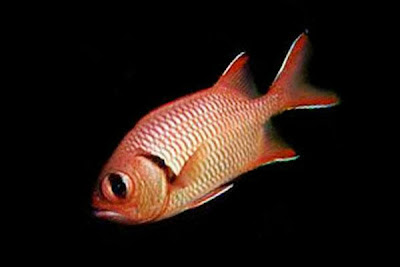The HAWAIIAN RED LIONFISH (called nohu pinao) is an uncommon
lionfish, unique to Hawaii, with a striped red and white pattern. These fish have exceptionally long dorsal
spines and extended white spines on pectoral fins. During the day, these fish are typically
found hiding in caves and under ledges, sometimes in groups, and are known to
frequent the same spot for years at a time.
At night, they’re found gliding back and forth with the current hunting
for small crabs and shrimp.
Due to the
venom in their spines, these fish should never be touched, as their venom is
said to cause pain that feels like being repeatedly hit with a hammer! If stung, immediate swelling is noted to the
puncture sites, along with a purple bruise/discoloration. It’s said that the only relief is submerging
stung area into hot water, but relief is only temporary. The sting can cause immense pain for weeks
according to those stung, so take caution and look from a distance! These fish
are hard to find because they’ve been over fished for tanks and
collectors. Their Hawaiian name means “dragonfly”.












